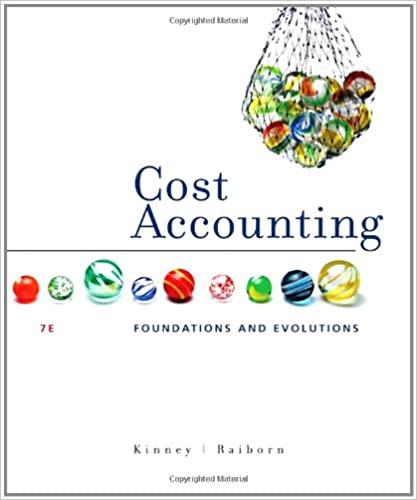

Bank regulators impose minimum capital adequacy standards on commercial banks. a) Table 2 demonstrates the capital adequacy ratios of Commonwealth Bank of Australia (CBA). Comment on the compliance of CBA to the Prudential Standard APS110- Capital Adeqaucy 25 Marks Table 2: Capital Adequacy Ratios: Commonwealth Bank of Australia Group Regulatory Capital Position 31 Dec 20 30 Jun 20 30 Jun 21 % % % 13. 1 12.6 11.6 2.6 2.4 2.3 Summary Group Capital Adequacy Ratios (Level 2) Common Equity Tier 1 Additional Tier 1 Tier 1 Tier 2 Total Capital (APRA) Common Equity Tier 1 (Internationally comparable) ' 15. 7 4.1 15. O 3. 9 18.9 18. 7 13.9 3.6 17.5 19. 8 19.4 17.4 1 Analysis aligns with the 13 July 2015 APRA study titled "International capital comparison study". 30 Jun 21 $M 31 Dec 20" $M 30 Jun 20 SM Group Regulatory Capital Position Ordinary share capital and treasury shares 2 Reserves Retained earnings Common Equity Tier 1 Capital before regulatory adjustments Common Equity Tier 1 regulatory adjustments Common Equity Tier 1 Capital Additional Tier 1 Capital Tier 1 Capital Tier 2 Capital Total Capital Risk Weighted Assets 38,432 3,249 36,558 78.239 (19,403) 58,836 12,008 70,844 18,472 89,316 450,680 38,432 2,287 33,832 74,551 (17,476) 57,075 10,825 67,900 17,822 85,722 453,616 38,182 2,668 30,811 71,661 (19,110) 52,551 10,841 63,392 16,429 79,821 454,948 1 2 Comparative information has been restated to include the effect of retrospective accounting changes. For more details refer to the 2021 Annual Report Note 1.1. Inclusive of treasury shares of $12 million (31 Dec 20: $15 million, 30 Jun 20: $51 million) held by the Group's eligible employee share scheme trusts. Source: Basel III Pillar 3 Disclosures, Commonwealth Bank of Australia b) Figure 2 provides the backtesting results for the VaR of Westpac Banking Corporation ending March 31 2021 (Figure 2a) and March 31 2020 (Figure 2b). Compare the backtesting results from both periods in the context of the COVID-19 pandemic. (15 marks) Figure 2a: Backtesting results for March 31 2021 Traded Risk: Actual Profit and Loss vs. Var 01-Oct-2020 to 31-March-2021 Actual Profit and Loss (Sm) 50 40 30 20 10 (10) (20) (30) (40) (50) 10 40 50 20 30 Daily Value at Risk (m) Figure 26: Backtesting results for March 31 2020 Traded Risk Actual Profit and Loss vs. Var 01-Oct-2019 to 31-Mar-2020 Actual Profit and Loss (m) 40 30 20 10 0 o (10) (20) (30) (40) (50) 10 15 35 40 45 50 20 25 30 Daily Value of Risk (m) Note: Each point on the graph represents 1 day's trading profit or loss. This result is placed on the graph relative to the associated VaR utilisation. The downward sloping line represents the point where a loss is equal to VaR utilisation. Bank regulators impose minimum capital adequacy standards on commercial banks. a) Table 2 demonstrates the capital adequacy ratios of Commonwealth Bank of Australia (CBA). Comment on the compliance of CBA to the Prudential Standard APS110- Capital Adeqaucy 25 Marks Table 2: Capital Adequacy Ratios: Commonwealth Bank of Australia Group Regulatory Capital Position 31 Dec 20 30 Jun 20 30 Jun 21 % % % 13. 1 12.6 11.6 2.6 2.4 2.3 Summary Group Capital Adequacy Ratios (Level 2) Common Equity Tier 1 Additional Tier 1 Tier 1 Tier 2 Total Capital (APRA) Common Equity Tier 1 (Internationally comparable) ' 15. 7 4.1 15. O 3. 9 18.9 18. 7 13.9 3.6 17.5 19. 8 19.4 17.4 1 Analysis aligns with the 13 July 2015 APRA study titled "International capital comparison study". 30 Jun 21 $M 31 Dec 20" $M 30 Jun 20 SM Group Regulatory Capital Position Ordinary share capital and treasury shares 2 Reserves Retained earnings Common Equity Tier 1 Capital before regulatory adjustments Common Equity Tier 1 regulatory adjustments Common Equity Tier 1 Capital Additional Tier 1 Capital Tier 1 Capital Tier 2 Capital Total Capital Risk Weighted Assets 38,432 3,249 36,558 78.239 (19,403) 58,836 12,008 70,844 18,472 89,316 450,680 38,432 2,287 33,832 74,551 (17,476) 57,075 10,825 67,900 17,822 85,722 453,616 38,182 2,668 30,811 71,661 (19,110) 52,551 10,841 63,392 16,429 79,821 454,948 1 2 Comparative information has been restated to include the effect of retrospective accounting changes. For more details refer to the 2021 Annual Report Note 1.1. Inclusive of treasury shares of $12 million (31 Dec 20: $15 million, 30 Jun 20: $51 million) held by the Group's eligible employee share scheme trusts. Source: Basel III Pillar 3 Disclosures, Commonwealth Bank of Australia b) Figure 2 provides the backtesting results for the VaR of Westpac Banking Corporation ending March 31 2021 (Figure 2a) and March 31 2020 (Figure 2b). Compare the backtesting results from both periods in the context of the COVID-19 pandemic. (15 marks) Figure 2a: Backtesting results for March 31 2021 Traded Risk: Actual Profit and Loss vs. Var 01-Oct-2020 to 31-March-2021 Actual Profit and Loss (Sm) 50 40 30 20 10 (10) (20) (30) (40) (50) 10 40 50 20 30 Daily Value at Risk (m) Figure 26: Backtesting results for March 31 2020 Traded Risk Actual Profit and Loss vs. Var 01-Oct-2019 to 31-Mar-2020 Actual Profit and Loss (m) 40 30 20 10 0 o (10) (20) (30) (40) (50) 10 15 35 40 45 50 20 25 30 Daily Value of Risk (m) Note: Each point on the graph represents 1 day's trading profit or loss. This result is placed on the graph relative to the associated VaR utilisation. The downward sloping line represents the point where a loss is equal to VaR utilisation








